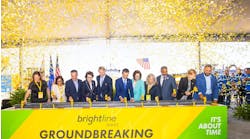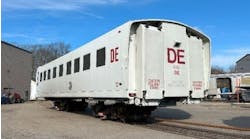Common Good has released a report revealing that improved permitting for the proposed Gateway Rail Tunnel Project under the Hudson River could save taxpayers billions and avoid significant environmental harm. The report – titled “Billions for Red Tape: Focusing on the Approval Process for the Gateway Rail Tunnel Project” – outlines the economic and environmental costs of different permitting timetables and proposes approval mechanisms to reduce the cost and enhance the environmental benefits of the project. The report was written by Common Good’s Chair Philip K. Howard and supplements an earlier Common Good report released in September 2015: “Two Years, Not Ten Years: Redesigning Infrastructure Approvals.”
The Gateway Rail Tunnel Project is a $24 billion infrastructure plan to alleviate a critical bottleneck on the Northeast Corridor rail line (Washington, DC to Boston). It will create two new tunnels between New Jersey and Penn Station in New York City, rebuild capacity on the New Jersey approaches to the Hudson, and add platform and station capacity within Penn Station. The existing rail connection between New Jersey and Penn Station consists of a pair of 105-year-old tunnels just south of the Lincoln Tunnel. These rail tunnels, which serve both Amtrak and NJ Transit trains, were already in need of repair when they were badly damaged in 2012 by millions of gallons of seawater from Superstorm Sandy.
Final costs for the project will depend on when work can begin. Planning for the project is substantially complete, and, with permits in place, work could start by the end of 2017. However, Gateway requires environmental review and permits from almost two dozen federal, state, and local agencies. Today, there is no clear path to review and permitting for the project, even though a similar project (the ARC Project) underwent a six-year environmental review and was fully permitted. Nor is there agreement as to the scope of review that is required. Amtrak estimates a process of three years. Other participants have suggested that it will take twice as long. A seven-year review process would mean the new tunnels would not open until 2030 at the earliest, past the time at which both of the existing tunnels will likely be shut down for extensive repairs, wreaking havoc long-term on transportation in the region.
With a project the size of Gateway, time is not just money, but lots of money. As set forth in the new report, when compared to an 18-month process to finish review and permitting, a three-year permitting timetable would increase taxpayer cost of the project by over $3 billion, and a further two-year delay would increase costs by almost $10 billion. Another two years would raise costs by more than $13 billion. The calculations include the construction cost increase from delay, delayed construction benefits, lost business activity, lost property tax revenue, delay in environmental benefits, and additional costs from shutting down one or both existing tunnels.
“The Gateway Project is essential, and there are no serious arguments against it,” said Philip K. Howard. “The question is: Will taxpayers be saddled with billions in avoidable costs as well as preventable environmental harm? What is needed to advance the public interest is an expedited and certain legal path to approval of Gateway.”
“Common Good’s work makes clear that Gateway is our opportunity to prove that the New York metropolitan region can match any place in the world when it comes to efficient and cost-effective development of high-quality transportation infrastructure, starting with the permitting process,” said Kathryn Wylde, President and CEO of the Partnership for New York City. “For too long, the U.S. has been a laggard when it comes to major public projects. Common Good’s report is a first step toward correcting that status.”
The circumstances of the Gateway Rail Tunnel Project require a review and permitting process that is completed by the time contractors are able to begin work, because: i) the risk of shutdown of the damaged existing tunnels itself is an overriding reason; ii) there is no reasonable alternative to the new tunnels; iii) delay will add billions to the cost and will be harmful environmentally; and iv) the costs and benefits have already been extensively studied and debated with the similar ARC Project.
Meeting this timetable requires that multiple governmental agencies meet time deadlines, and that an overriding authority exists to resolve disagreements that are inevitable among agencies with different public mandates. The report proposes mechanisms for establishing that authority.
The main challenge in achieving this result is that agencies are not used to working this way. That is why commitment by political leaders is vital. Public support for a disciplined timetable is also essential. The benefits more than justify a determined effort to make sure this happens: Taxpayers will save billions, traffic congestion will be reduced, and the New Jersey and New York economies will get a needed boost – just by minimizing red tape.


